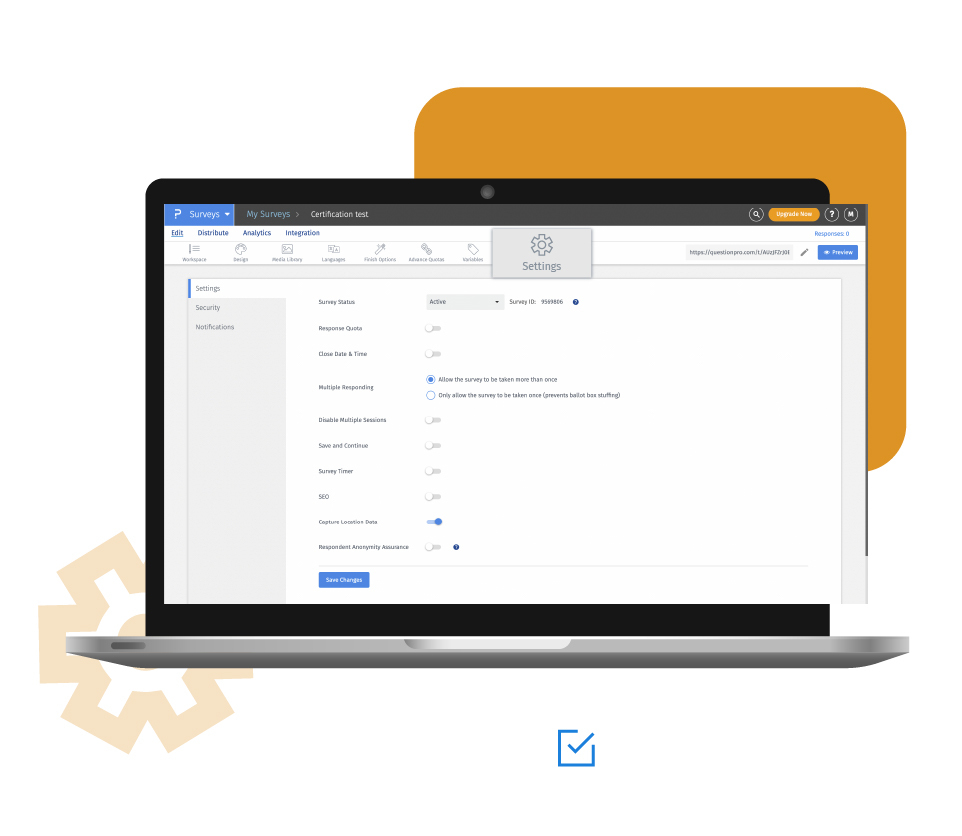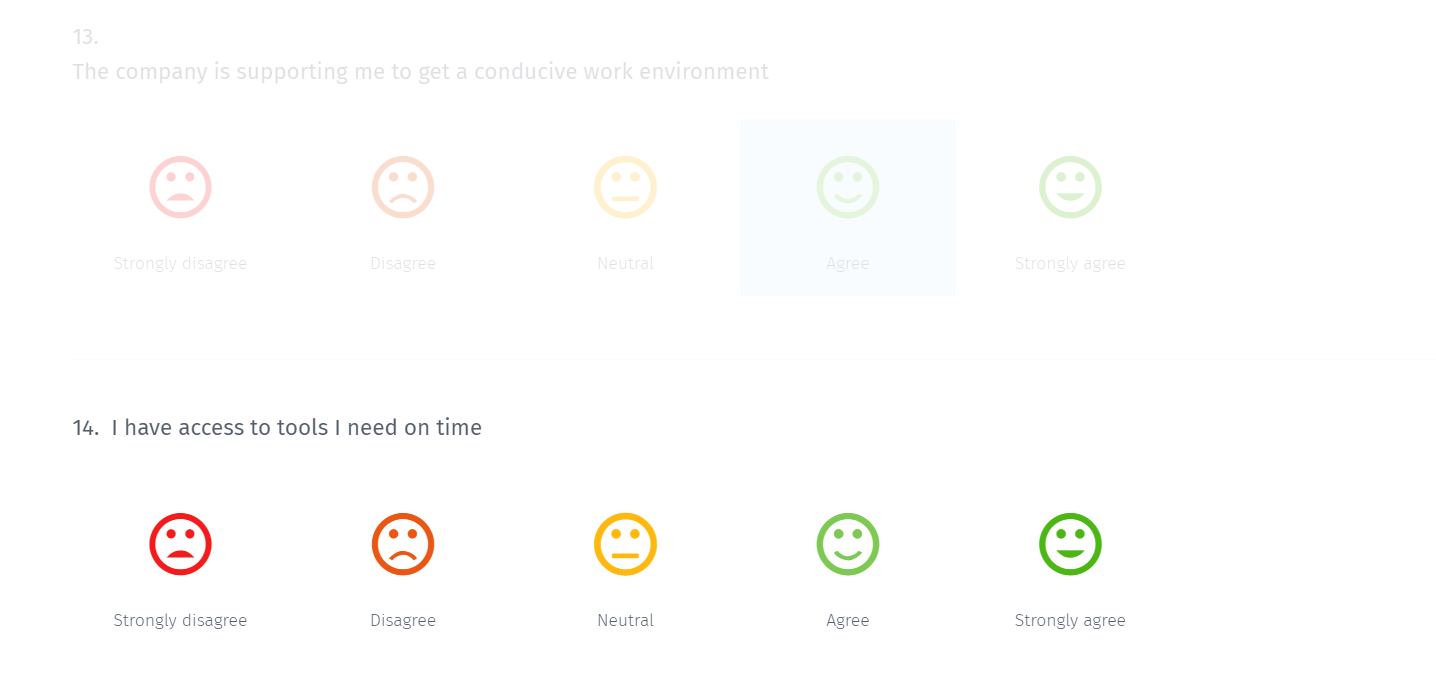Example of automatic question numbering in a survey
Consider you are doing a survey to test how well your employees are supported to work remotely. You are asking them a series of questions regarding working from home, and there are various question types in the survey. You have some single-select questions, some smiley rating questions, and some open-ended questions. Your flow in this survey is crucial to identify and isolate problem areas to fix them and support your staff better. Numbering your survey will help your employees know the number of questions, how many they need to answer, and their questionnaire progress.

Uses of automatic question numbering in surveys
If you conduct surveys that have a high number of survey questions, it helps survey respondents answer the survey better. Also, numbering your surveys or questions where not all the questions are mandatory helps your audience navigate the survey better.
Advantages of creating surveys with automatic question numbering
Not overwhelm: Numbering your survey questions lets survey respondents know how many questions they have to answer. This helps not overwhelm them and improves the survey response rate.
Know progress: When your questionnaires are numbered, it is effortless to track the survey progress. Your questionnaire respondents know how many questions they have answered and how many more they need to answer.
Follow the survey better: Numbered surveys are easier to follow and answer for respondents. This especially holds true for long surveys that can be taken over a longer duration due to the high number of questions in them.
How to use automatic question numbering in surveys
To use automatic question numbering in surveys, read our help files on how to set up automatic question numbering.
Survey Software Easy to use and accessible for everyone. Design, send and analyze online surveys.
Research Suite A suite of enterprise-grade research tools for market research professionals.
Customer Experience Experiences change the world. Deliver the best with our CX management software.
Employee Experience Create the best employee experience and act on real-time data from end to end.






